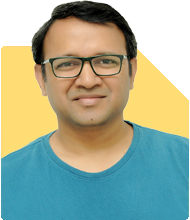Ramalingam Kalirajan |10894 Answers |Ask -Follow
Mutual Funds, Financial Planning Expert - Answered on May 15, 2024
He has an MBA in finance from the University of Madras and is a certified financial planner.
He is the director and chief financial planner at Holistic Investment, a Chennai-based firm that offers financial planning and wealth management advice.... more

I want to invest in mutual funds, and buy a house in 10 years. My monthly salary is 1 lakh per month, expenses are 40K per month. Which mutual funds should I consider?
Goal-based Investing
Your goal of purchasing a house in 10 years necessitates a focused investment approach. We'll aim for a balanced portfolio that combines growth-oriented and stability-focused funds to generate wealth steadily over the long term.
Asset Allocation Strategy
Given your time horizon of 10 years, a predominantly equity-oriented portfolio is advisable to harness the potential of higher returns. We'll allocate a portion of your investable surplus to equity funds while maintaining a conservative allocation to debt funds for stability.
Mutual Fund Selection
Large-cap Equity Funds: These funds invest in well-established companies with a track record of stable performance. They provide stability to the portfolio while offering growth potential.
Multi-cap or Flexi-cap Funds: These funds have the flexibility to invest across market capitalizations, allowing them to capitalize on opportunities across the market spectrum. They offer a balanced approach to growth and risk.
Aggressive Hybrid Funds: Combining equity and debt components, these funds provide a balanced risk-return profile, making them suitable for long-term wealth accumulation goals like yours.
Debt Funds: Including short to medium duration debt funds can provide stability to the portfolio and mitigate the volatility associated with equity investments.
Systematic Investment Plan (SIP)
Given your monthly surplus, setting up SIPs in the selected funds will enable disciplined investing while leveraging the power of rupee cost averaging.
Professional Guidance
As a Certified Financial Planner, I recommend periodically reviewing your portfolio's performance and rebalancing it as needed to stay aligned with your financial goals.
Conclusion
Constructing a diversified mutual fund portfolio tailored to your goal of buying a house in 10 years requires a balanced approach that combines equity and debt instruments. With disciplined investing and professional guidance, you can steadily build wealth and achieve your aspiration of homeownership.
Best Regards,
K. Ramalingam, MBA, CFP,
Chief Financial Planner,
www.holisticinvestment.in
You may like to see similar questions and answers below
Omkeshwar Singh | Answer |Ask -Follow
Head, Rank MF - Answered on May 12, 2021
Ramalingam Kalirajan |10894 Answers |Ask -Follow
Mutual Funds, Financial Planning Expert - Answered on Apr 05, 2024
Ramalingam Kalirajan |10894 Answers |Ask -Follow
Mutual Funds, Financial Planning Expert - Answered on Jul 12, 2024
Ramalingam Kalirajan |10894 Answers |Ask -Follow
Mutual Funds, Financial Planning Expert - Answered on Aug 01, 2024
Ramalingam Kalirajan |10894 Answers |Ask -Follow
Mutual Funds, Financial Planning Expert - Answered on Sep 03, 2024
Patrick Dsouza |1429 Answers |Ask -Follow
CAT, XAT, CMAT, CET Expert - Answered on Dec 16, 2025
Nayagam P P |10858 Answers |Ask -Follow
Career Counsellor - Answered on Dec 16, 2025
Nayagam P P |10858 Answers |Ask -Follow
Career Counsellor - Answered on Dec 16, 2025
Samraat Jadhav |2510 Answers |Ask -Follow
Stock Market Expert - Answered on Dec 16, 2025
Samraat Jadhav |2510 Answers |Ask -Follow
Stock Market Expert - Answered on Dec 16, 2025
Nayagam P P |10858 Answers |Ask -Follow
Career Counsellor - Answered on Dec 16, 2025
Nayagam P P |10858 Answers |Ask -Follow
Career Counsellor - Answered on Dec 16, 2025
Ramalingam Kalirajan |10894 Answers |Ask -Follow
Mutual Funds, Financial Planning Expert - Answered on Dec 16, 2025
Nitin Narkhede |113 Answers |Ask -Follow
MF, PF Expert - Answered on Dec 15, 2025
Nitin Narkhede |113 Answers |Ask -Follow
MF, PF Expert - Answered on Dec 15, 2025


























